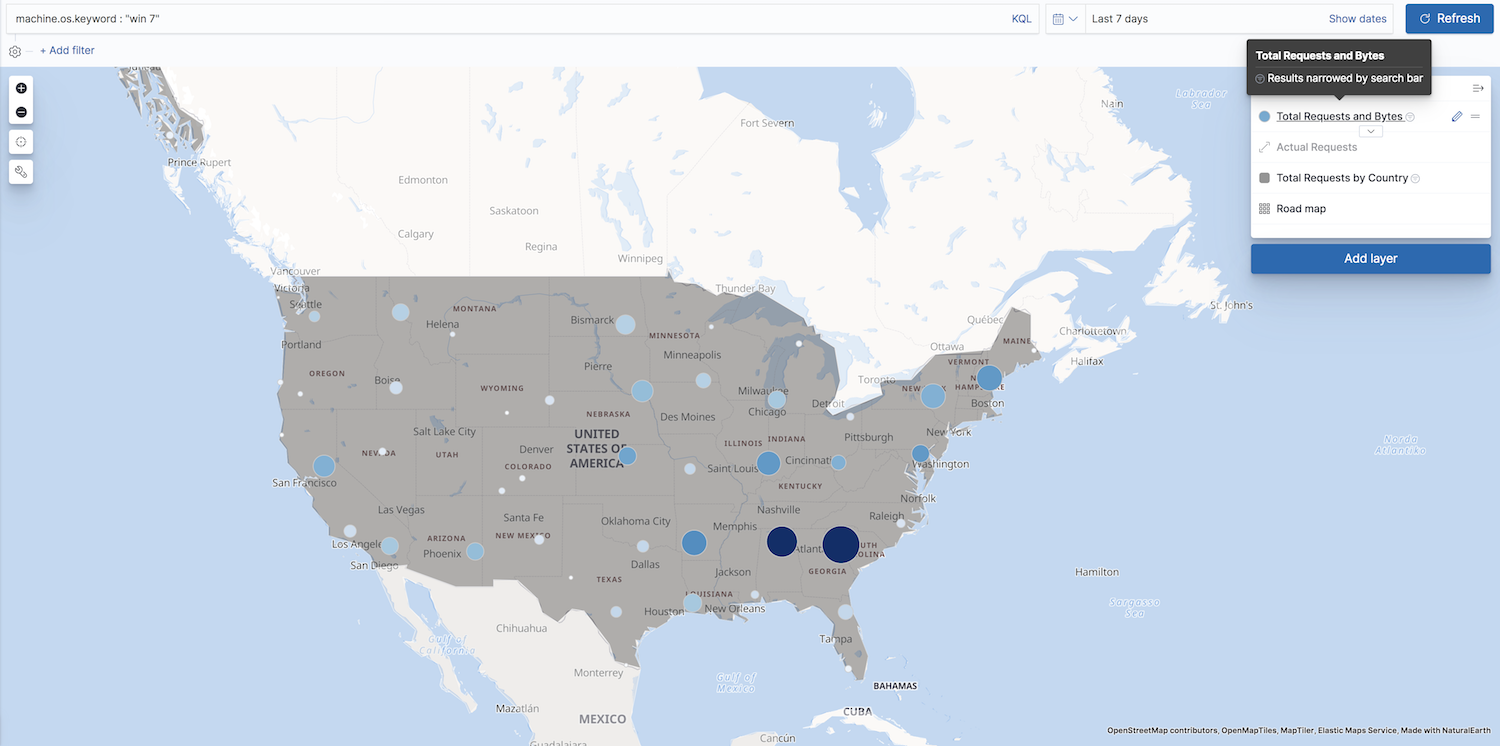IMPORTANT: No additional bug fixes or documentation updates
will be released for this version. For the latest information, see the
current release documentation.
Search geographic data
edit
IMPORTANT: This documentation is no longer updated. Refer to Elastic's version policy and the latest documentation.
Search geographic data
editMaps embeds the search bar for real-time search.
Only layers requesting data from Elasticsearch are filtered when you submit a search request.
Layers narrowed by the search context contain the filter icon ![]() next to the layer name in the legend.
next to the layer name in the legend.
You can create a layer that requests data from Elasticsearch from the following:
-
Vector layer with:
- Documents
- Clusters and grid
- Term join
- Heat map layer
